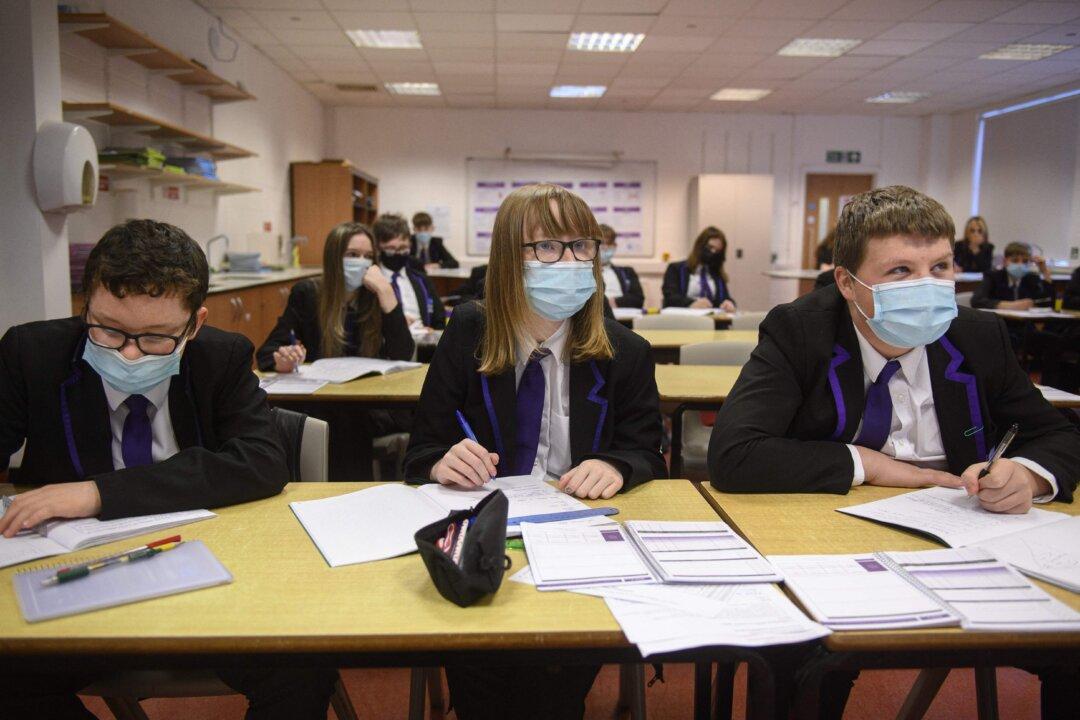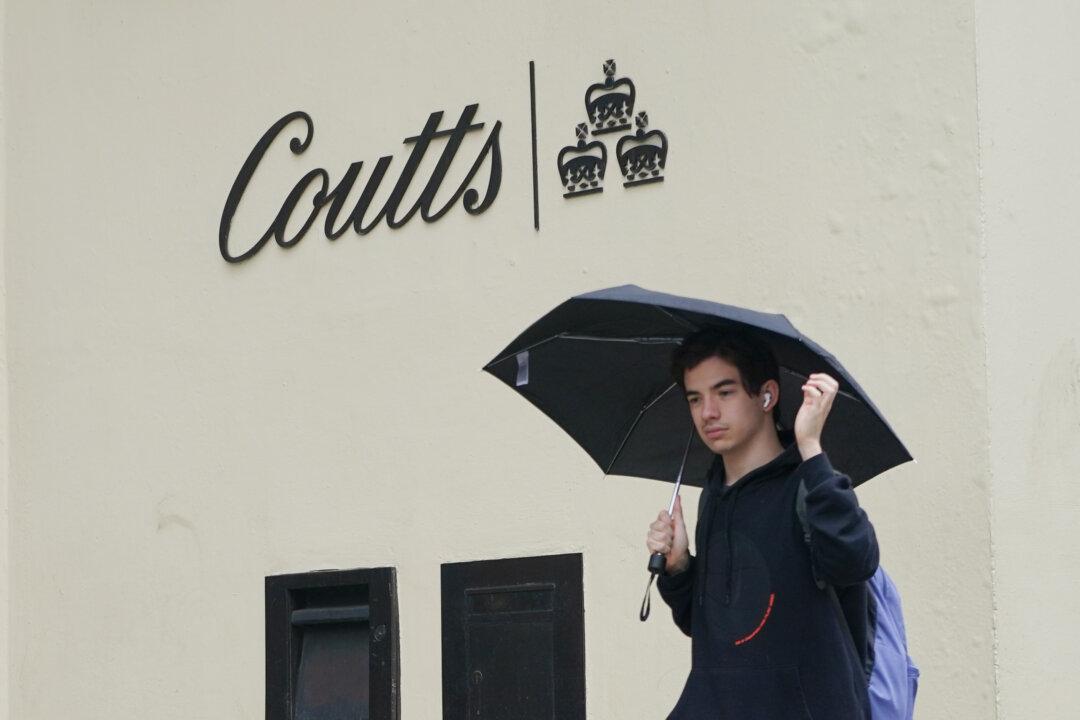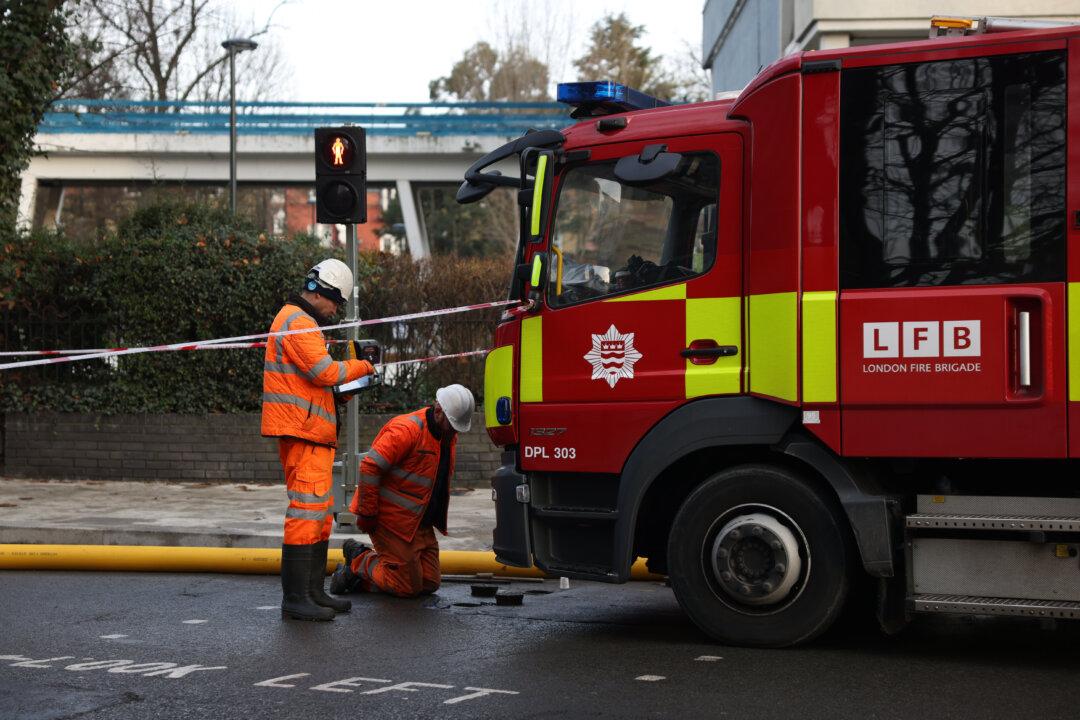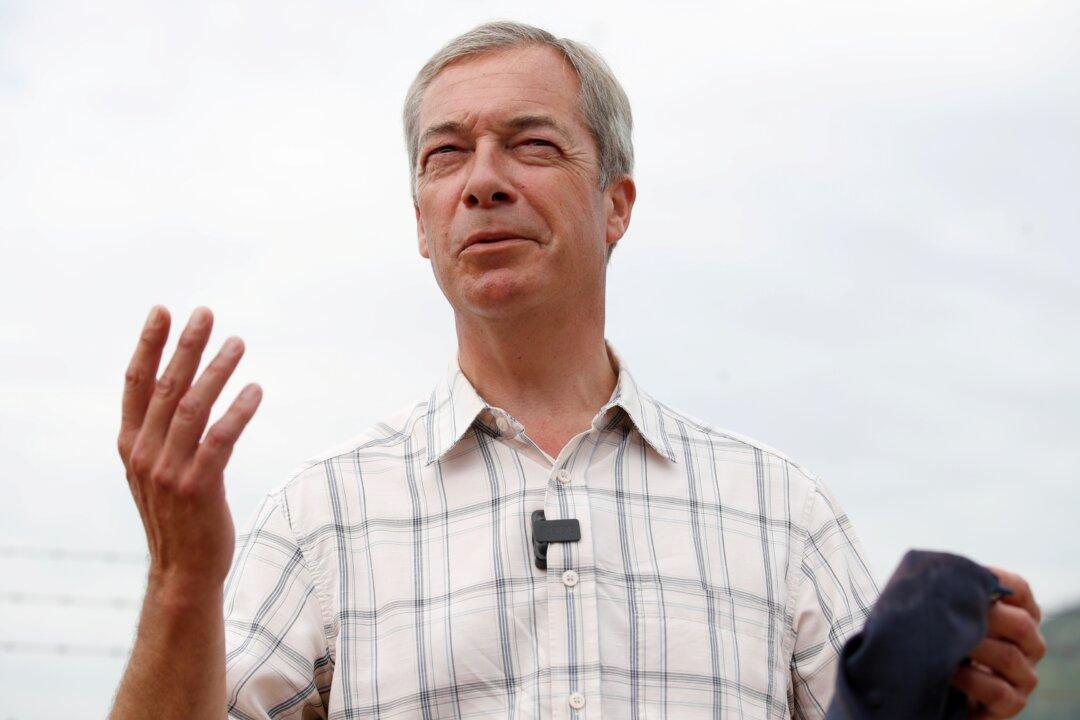The UK government has admitted that scientific evidence on the impact of using masks in schools is “not conclusive,” just three days after it recommended that secondary school students should wear masks inside classrooms to slow the spread of the CCP (Chinese Communist Party) virus.
Face coverings are already recommended in outdoor communal areas and corridors for English pupils in year 7 and above, who are usually aged 11 and above. In its latest guidance issued on Jan. 2, the Department for Education (DfE) recommended that masks should also be worn inside classrooms when the new terms begin after the Christmas break.





